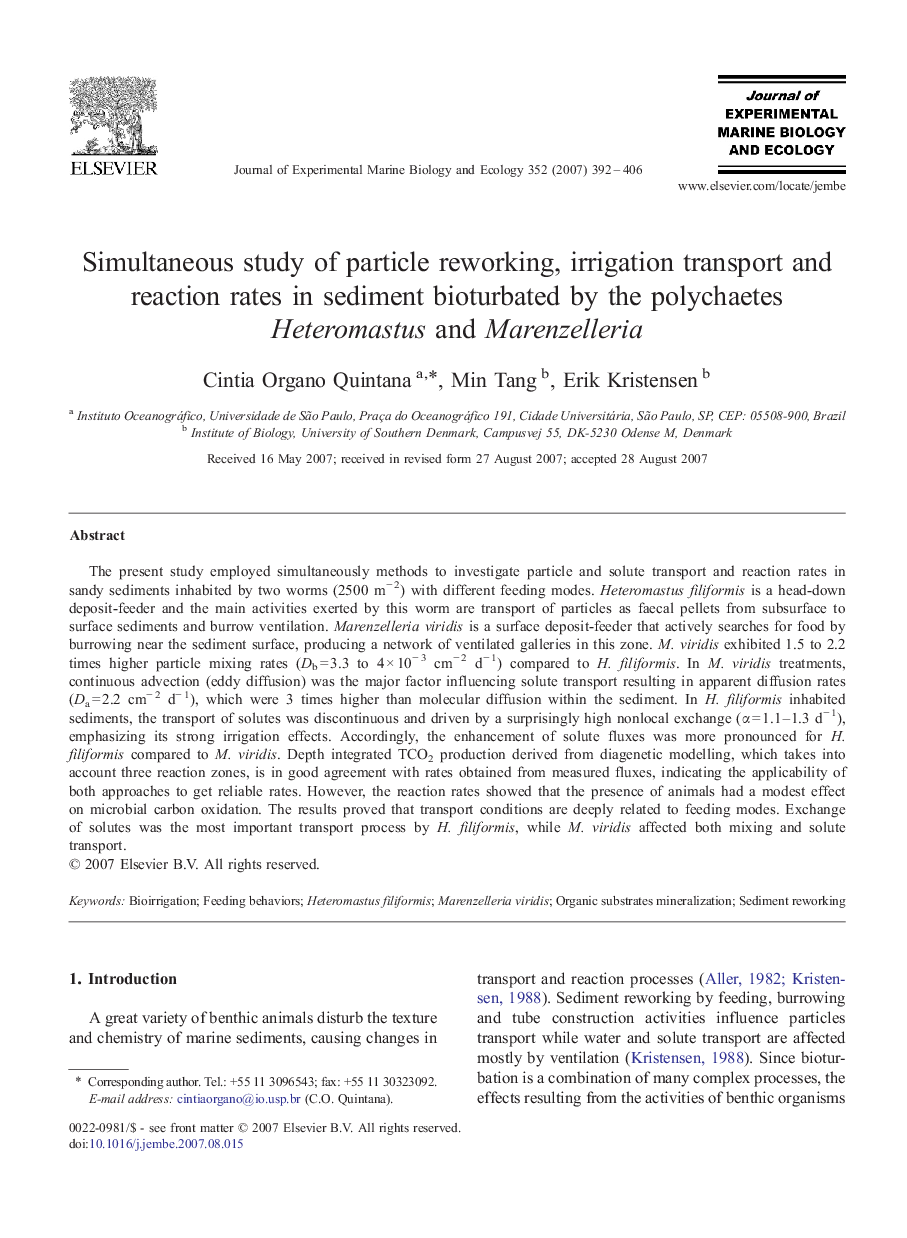| Article ID | Journal | Published Year | Pages | File Type |
|---|---|---|---|---|
| 4397523 | Journal of Experimental Marine Biology and Ecology | 2007 | 15 Pages |
The present study employed simultaneously methods to investigate particle and solute transport and reaction rates in sandy sediments inhabited by two worms (2500 m− 2) with different feeding modes. Heteromastus filiformis is a head-down deposit-feeder and the main activities exerted by this worm are transport of particles as faecal pellets from subsurface to surface sediments and burrow ventilation. Marenzelleria viridis is a surface deposit-feeder that actively searches for food by burrowing near the sediment surface, producing a network of ventilated galleries in this zone. M. viridis exhibited 1.5 to 2.2 times higher particle mixing rates (Db = 3.3 to 4 × 10− 3 cm− 2 d− 1) compared to H. filiformis. In M. viridis treatments, continuous advection (eddy diffusion) was the major factor influencing solute transport resulting in apparent diffusion rates (Da = 2.2 cm− 2 d− 1), which were 3 times higher than molecular diffusion within the sediment. In H. filiformis inhabited sediments, the transport of solutes was discontinuous and driven by a surprisingly high nonlocal exchange (α = 1.1–1.3 d− 1), emphasizing its strong irrigation effects. Accordingly, the enhancement of solute fluxes was more pronounced for H. filiformis compared to M. viridis. Depth integrated TCO2 production derived from diagenetic modelling, which takes into account three reaction zones, is in good agreement with rates obtained from measured fluxes, indicating the applicability of both approaches to get reliable rates. However, the reaction rates showed that the presence of animals had a modest effect on microbial carbon oxidation. The results proved that transport conditions are deeply related to feeding modes. Exchange of solutes was the most important transport process by H. filiformis, while M. viridis affected both mixing and solute transport.
